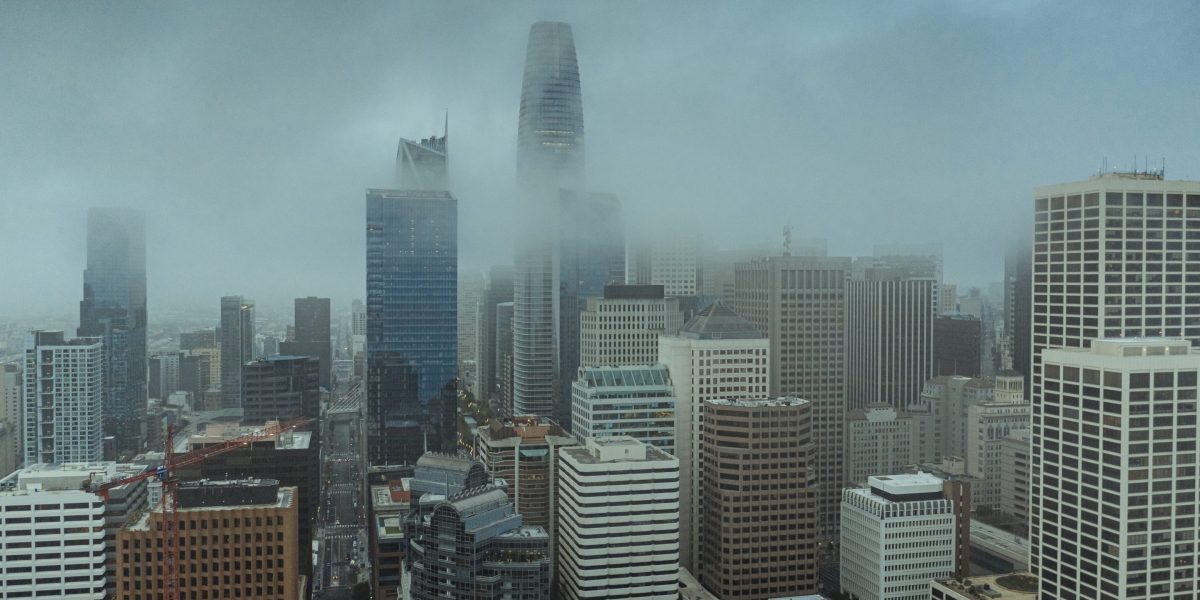This post was originally published on this site
https://fortune.com/img-assets/wp-content/uploads/2024/04/GettyImages-1205847038-e1712264195807.jpg?w=2048
The poster child of commercial real estate’s downfall is making headlines again, for the worse.
“The office sector slashed its vacancy record set just a quarter ago,” and it’s getting even closer to the 20% mark, according to Moody’s Analytics. As of the fourth quarter of this year, the office vacancy rate reached 19.8%, up from 19.6% the prior quarter. Not to mention, the new record high vacancy rate is 50 basis points “above the recessionary peaks recorded in 1986 and 1991,” an analysis published earlier this week found.
All commercial real estate is vulnerable to higher interest rates, more so after an era of cheap money. That’s really what is causing the distress within the industry. Capital Economics, a research firm, estimated a $590 billion loss in commercial real estate property values last year, followed by another $480 billion wipeout this year. Morgan Stanley analysts once predicted something “worse than in the Great Financial Crisis” for commercial real estate. And offices have had yet another thorn in their side, stemming from the pandemic: remote work.
The prior peaks in 1986 and 1991 “occurred under notably different market conditions than today, highlighting today’s vacancy rate peak as a result of shifting working styles,” co-author of the analysis and associate economist Nick Luettke said in a statement to Fortune. “The two historic peaks came as a result of underlying macroeconomic conditions. The 1986 vacancy rise came as the result of surging supply with high construction levels, while 1991 came as a result of the previous decade of construction fusing with greater economic uncertainty at the time.”
Presently, it’s as simple as this, if people are working from home, they’re not working in an office. Of course there are hybrid work models, but it still equates to needing less physical office space. That’s why office vacancies are setting record highs. “Another quarter of vacancy increase emphasizes the long-term ramifications of hybrid work models, despite positive employment and GDP trends in the current economic cycle,” the report read. Effective rents are falling too, by 0.04% in the first quarter.
But Moody’s Analytics’ head of commercial real estate analysis, Kevin Fagan, previously told Fortune, “the story of office isn’t a story of mass obsolescence, it’s more of a ‘it’s going to take time for it to normalize and discover what it is in the future.’”
In the analysis from this week, the authors wrote, some companies are doubling down on office space, and that’s why we’re seeing a “slow bleed.” And we know that San Francisco’s office sector in particular is seeing some signs of hope because of the hype surrounding artificial intelligence, after it was once expected to be one of the hardest hit. “San Francisco went through a very low low, and we heard words of doom loop, and now we’re going through what I think a lot of people see as just the nascent beginning of a recovery,” Alexander Quinn, senior director of Northern California research for JLL, a real estate services company, previously told Fortune. For some context, by the end of last year, AI companies had leased 3.9 million square feet of office space, a 50% increase from the year earlier—and made up roughly 28% of leasing activity within the office space, Quinn said.
So offices haven’t gone extinct, but they aren’t out of the woods by any means; Capital Economics expects office values to fall more than 40% peak-to-trough by the end of 2025, with no recovery even by 2040, as of the end of last year. Fagan previously said vacancies would begin to fall next year, but that this year would still be a rough one for the sector given how much vacancies weigh on rent growth. So it’s not clear if office vacancies have hit their peak in this current cycle.
“The doomsday scenario has yet to play out as financial, company culture, and collaboration explanations made by many companies underscore the salience of local, in-person footprints for many firms,” the authors of the Moody’s analysis wrote. “With significant lease rollovers and shifting interest rate expectations, uncertainty remains over exactly when office vacancy rates will truly peak.”


